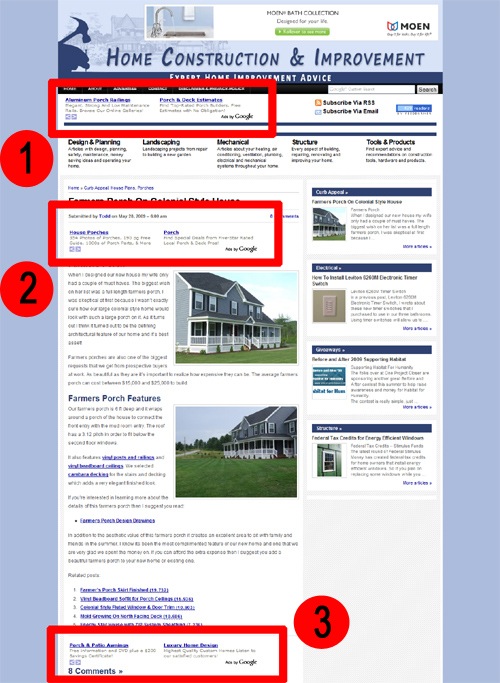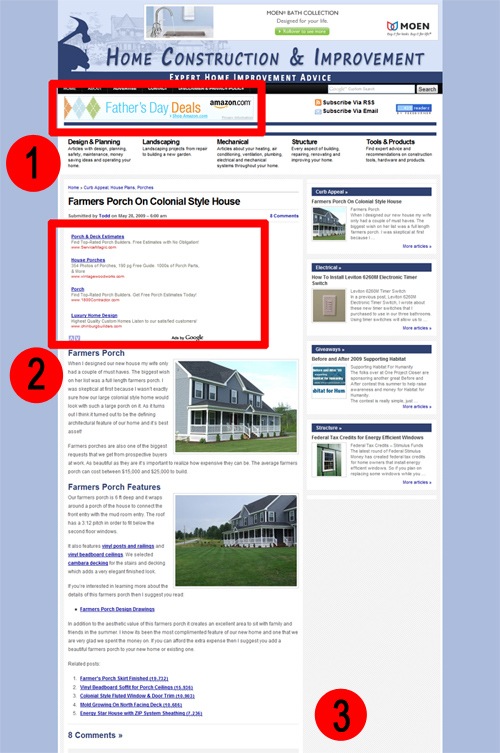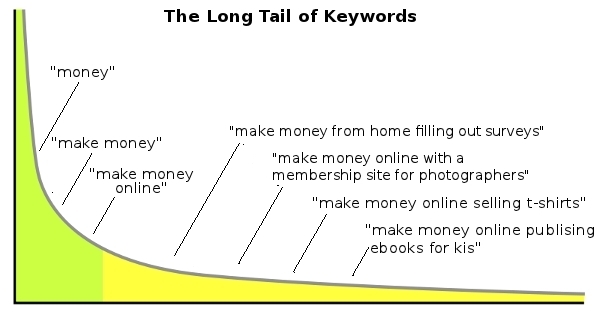I have been using Google AdSense to monetize my blogs and websites
for as long as I remember. In fact it was the first method I ever tried
(I made a whooping $15 on my first month… back in 2005). Over the years I
migrated to other methods (e.g., direct sponsors and affiliate
marketing), which made AdSense become merely an inventory filler. I was
still making around $1,000 monthly from it, but whenever I could I would
use other methods over it.
Then some months ago I started noticing an upward trend on the CPC of
my sites, and I figured that I should give AdSense another try. I
started applying some tricks here and there, and the next month I made
over $3,000 with it (that is combining all my sites). I was pleasantly
surprised, and I decided to keep using it actively on some sites.
In this article I want to share with you the tips and tricks I used to triple my AdSense earnings in one month.
1. I added units to my Big Websites
Daily Blog Tips and Daily Writing Tips are my largest websites in
terms of traffic. They are getting close to one million monthly page
views (combined). Despite that I was not using AdSense on them, mainly
because the direct sponsorship model was working relatively well.
Some months ago I decided to load some AdSense units on the sites,
however, and the results were very positive. Around 70% of the boost I
generated to my earnings came from these two sites. At the same time I
managed to keep the other monetization methods working fine, and no
reader ever complained about the new ads (more on that later).
Even if your blog is already making money with direct sponsors and
affiliate marketing, therefore, you could still manage to increment your
earnings by strategically adding some AdSense units.
2. I added units to my Small Websites
As many webmasters do, I have a bunch of small websites scattered
around the web. Some are on free hosted platforms like Blogger, and
others are self hosted sites that I abandoned along the way. Most of
these sites still get traffic, however. Not much, but combined the
numbers get decent.
I figured that adding AdSense units to all these sites could yield
some money, and I was right. The main reason is that, since these are
abandoned sites and don’t have loyal visitors, I can place the units
very aggressively. The result was a very high CTR (Click-through rate),
which compensates the small traffic levels.
Don’t underestimate the earning potential of small websites, especially if you are willing to place AdSense units aggressively.
3. I used the Large Units
If you want to make money with AdSense you’ll inevitably need to use
one of these units: the 336×280 large rectangle, the 300×250 rectangle,
the 120×600 large skyscraper or the 728×90 leaderboard.
Whenever I tried to use smaller units the results were disappointing.
Even if I positioned them aggressively the CTR was just too low.
All four units mentioned above can produce good results, but the best
performing one is by far the 336×280 large rectangle, and that is the
one I used to boost my earnings.
4. I placed the Units above the Fold
My first trial was to place the 336×280 large rectangle between the
post and the comments section of my blogs. The results were OK. I then
decided to try placing them below the post titles for one week, and the
CTR skyrocketed. In fact I still need to find a placement/unit
combination that will beat placing a 336×280 unit below post titles.
I knew this rule, but I guess I needed to test and get confirmation.
The rule is: if you want to make money with Google AdSense, you must
place your units above the fold.
5. I Focused on Organic Traffic
My main concern with adding a large AdSense unit right below my post
titles was that some of the loyal readers could get annoyed with it. At
the same time I knew that loyal readers become ad blind quite fast, and
that the bulk of my money would come from organic visitors (i.e., people
coming via search engines to my posts).
To solve this problem I decided to display the large rectangle only on posts older than seven days (using the
Why Do Work
WordPress plugin). It worked like a charm, as loyal readers don’t even
notice the ad units when they are browsing through my recent posts, and
organic visitors almost always see the ads because they usually land on
posts older than seven days.
6. I started using AdSense for Search
I was not sure how much money I would be able to make with AdSense
for Search, but I was not happy with the search results provided by
WordPress, so I decided to give it a shot anyway.
Currently I am making around $60 monthly with AdSense for Search. It
is not much, but if you sum it over one year we are talking about $720.
On top of that the search results are as relevant as you’ll get, so it
is a win win situation.
7. I started using AdSense for Feeds
Another AdSense product I decided to try was the AdSense for Feeds
one. I opted to display the ads below my feed items (you can also place
them on top, but this would be too intrusive in my opinion). The results
here were pretty good, both in terms of CTR and earnings.
You obviously need a large RSS subscriber base to make this work, but
I am guessing that even with a couple thousand subscribers you could
already make $100 monthly from feed ads.
8. I played around with section targeting
Section targeting is an AdSense feature that allows you to suggest
specific sections of your site that should be used when matching ads.
You can r
ead more about it here.
I found that on niche and small websites section targeting can help a
lot. Often times Google was displaying unrelated ads on these sites
because there weren’t enough pages. After using section targeting I
managed to increase the relevancy of the ads and consequently the CTRs.
9. I tested with Different Colors and Fonts
If you enabled both image and text ads on your units you should be
able to customize the colors and fonts. I did some testing with both of
these factors, and it helped to increase the numbers. Nothing dramatic,
but it was definitely worth my time.
You just need to track your CTR for a couple of weeks. Then change
the color or font and track it for another week, seeing if you can beat
the original CTR. If you can, keep the new format. If you the
performance decreased, try a new color or font and track the CTR for
another week, until you find the optimal combination.
On my sites the best results came from making the ad units merge with
the look of the site, but on some sites contrasting colors perform
better, so testing is a must.




